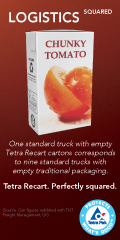
| Archives/Subscribe | www.clfp.com | Contact Us | March 6, 2012 |
LAO Makes Recommendations for Changes in Cap-and-Trade Program
The Legislative Analyst’s Office (LAO) has issued a report on the California Air Resources Board’s (CARB) greenhouse gas (GHG) cap-and-trade program that concentrates on the "policy trade-offs" that were made by the CARB in designing the program. The "policy trade-offs" referred to include the potential for emissions leakage and how to prevent it, the use of offset credits, steps taken to reduce volatility in allowance and offset credit pricing, oversight of both the auction and the market and the enforcement of cap-and-trade requirements on facilities subject to emission limits. It is the LAO conclusion that CARB’s choices in how to balance these competing trade-offs seems reasonable. However, LAO does makes three recommendations for changes in the CARB-designed program that it believes would improve the program and have little downside. The LAO report was prompted, in part, by the concerns of industry stakeholders that will be footing the bill through the forced purchase of allowances that are estimated to be in the hundreds of millions of dollars, up to $3 billion in the first year alone. For the most part, the LAO report seems to be directed to the Legislature in that it makes suggestions as to possible changes to the cap-and-trade regulation that the Legislature should consider. Areas that the LAO suggests should be reexamined include the amount of free emission allowances versus those amounts to be auctioned, further inquiry into market protection mechanisms, reassessment of penalties associated with noncompliance, and especially, how the proceeds from the auction should or will be used. At one point, the LAO states that the auction revenues are "mitigation fees" revenues based on a verbal opinion LAO received from Legislative Counsel. Further, as AB 32 was enacted before Proposition 26 and before the Jan. 1, 2010 retroactive date, Proposition 26 does not apply. Finally, the LAO also looks at what could happen should the program prove too costly and the Legislature decides to scrap the program. Options could include command and control regulations or a carbon tax. LAO Suggested Changes to Cap-and-Trade Regulation In addition to these suggestions, the LAO also proposes three changes to the regulations that it asserts would improve the program without any significant downside. Placing the burden for offset project failures on the offset producers instead of the offset users. Current regulations allow covered entities the right to satisfy up to 8 percent of their obligation to surrender emission allowances ("compliance instruments") by utilizing emission reductions derived from greenhouse gas reduction projects undertaken by individuals outside of the cap-and-trade program. But should the offset fail to provide the claimed reductions, the purchaser is liable for the total amount of emissions (i.e., should you purchase forest offsets and the forest burns down, you would be responsible for all the emissions theretofore credited, as well as current emissions). The regulations also provide that the CARB may invalidate an offset credit up to eight years after its issuance, leaving the program participant that purchased the offset holding the bag. In addition, the regulations prohibit an offset purchaser from relying on any offset credit that is under investigation. The LAO believes that penalizing the offset purchaser instead of its producer is the wrong policy choice because the producer is in the better position to ensure the project’s success. The LAO suggests putting the burden of non-compliance on the producer and further suggests that the producer could be required to purchase insurance to cover an offset failure. Eliminate holding limits. The cap-and-trade regulations limit the amount of emission credits that any participant in an allowance auction can hold at any one time to no more than 2.5 percent of the market. This is in theory designed to eliminate the ability of any one individual or group of individuals to obtain market power and therefore to have the ability to manipulate the market. However, the holding limits recognize the relative financial power that the oil companies or investment bankers have as compared to individual corporations such as food processors or glass manufacturers in obtaining allowances in the market. The loss of holding limits could put food processors at a huge disadvantage and drive the cost of allowances sky high as the cap declines and offsets become scarce. The LAO contends that this holding limit was established arbitrarily by CARB, that it lacks analytical support, and that there are significant consequences if the holding limits are set to tightly or too loosely. The LAO suggests that the holding limits be eliminated and instead the CARB could rely on increased penalties or some "better tool" to deter market manipulation. Reducing the uncertainty about how and if the cap-and-trade program would operate after 2020. Although AB 32 establishes a goal of reducing GHG emissions beyond the 2020 goal of 1990 emissions to approximately 80 percent below 1990 levels by 2050, nothing in either AB 32 or in the CARB regulations address how the cap-and-trade program will operate beyond 2020. The LAO suggests that the Legislature might consider laying out post-2020 policies before 2020. In addition to these three low-risk recommendations, the LAO report lays out a number of other options that would involve fundamental redesign of some parts of the program. Spurred by the LAO report, the Legislature has already held a hearing addressing the many unanswered questions arising from cap-and-trade. A budget subcommittee has heard testimony on the possible use of auction proceeds which may total as much as $3 billion in the first year. Other hearings scheduled in the next few weeks include a request for an audit of CARB’s use of the administrative fees collected and a hearing on whether auction revenues collected by CARB constitute a tax or a fee under Sinclair Paints vs. The Board of Equalization. A copy of the LAO report can be found at: www.lao.ca.gov/reports/2012/rsrc/cap-and-trade/cap-and-trade-020912.pdf. Article written by John Larrea, Director, Government Affairs |
|
| CALIFORNIA LEAGUE OF FOOD PROCESSORS 2485 Natomas Park Dr., Suite 550 Sacramento, CA 95833 Phone: (916) 640-8150 Fax: (916) 640-8156 www.clfp.com |
 |



